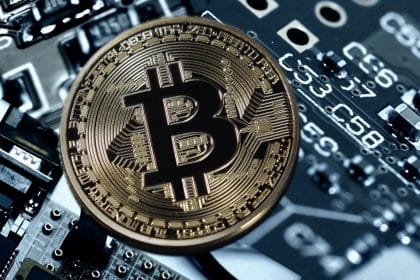Bitcoin Cash price is under a lot of pressure after it broke the $150 support against the US Dollar. There is a major declining channel formed with resistance near $135 on the hourly chart of the BCH/USD pair.
Craig Wright’s Bitcoin SV hard fork off of BCH didn’t exactly pan out as he wanted and it seems that this coin isn’t really appealing to miners.
When Wright formed an alliance with CoinGeek founder Calvin Ayre to launch a hostile takeover of the Bitcoin Cash (BCH) network, the two men predicted that their BCH implementation, Bitcoin SV (BSV), would quickly accrue near universal support among miners due to its allegedly miner-friendly protocol specifications.
Wright went so far that in his tweet, he warned Bitcoin miners that, if they continue their support for the Roger Ver/Jihan Wu (Bitmain)-backed Bitcoin Cash ABC (BCH) over his Bitcoin Satoshi’s Vision (BSV) project, he would be looking to fund his side of any ensuing ‘hash war’ battle by selling off Bitcoins.
Bitcoin Cash (BCH), now the fifth largest cryptocurrency recently underwent a huge battle within its community, giving birth to Bitcoin SV, which now sits at the ninth position on the index. During the BCH hard fork, big mining players like Bitmain disrupted the flow of the cryptocurrency market, causing a crash in the space.
Even though Bitcoin Cash and Bitcoin SV have similar hash rates and they both use the SHA-256 hashing algorithm, there are not much more similarities between the two coins. Using Bitcoin as a baseline, according to Coin Dance, the coin statistics platform, Bitcoin is 43% more profitable to mine than BSV.
Despite BCH’s post-fork price collapse, it is currently the most profitable of the three major Bitcoin iterations, at least for miners. At present, BCH is 9.2 percent more profitable than BTC, even after its recent difficulty reduction, making it around 47 percent more lucrative for miners than BSV.
The truth is that hash rates have done Bitcoin Cash ABC and Bitcoin Cash SV few favors with post hard fork hash war not only over, but also leaving both sides beaten, the respective hash rates having tumbled to low and relatively tight ranges over the last week.
Institutional investors may have gotten a good insight into the ramifications of discontent within a particular network and, when considering the frequency of hard forks and the need for them, disputes between miners and developers should certainly be a concern.
In previous hard forks, investors had not only enjoyed a pre-fork rally, but also free coins at the end of it and investing ahead of a hard fork was as much of a sure thing as the sun rising in the morning. Except when the November fork happened.
Major Exchanges Choosing Sides
Just for reminder, Poloniex, which became the first exchange to offer trading for the upcoming Bitcoin Cash hard fork, is offering the following pairs: BCHABC/BTC, BCHSV/BTC, BCHABC/USDC, and BCHSV/USDC. Customers also have the option of converting Bitcoin Cash into BCHABC and BCHSV, and vice-versa. However, there were no withdrawal facilities for the two coins before the hard fork.
On November 2, Binance confirmed its support of the hard fork and said that it would temporarily suspend deposit and withdrawals of BCH.
Coinbase also announced its support of the planned upgrade and informed its clients that it would pause deposit and withdrawals services on all BCH wallets for the hour leading up to the hard fork. Ledger also announced its plan to suspend deposit and withdrawal support for BCH before the hard fork to avoid loss of funds.
Dominating Proposals
It all started with two dominating proposals for the implementation of the BCH network in the form of Bitcoin ABC and Bitcoin SV (Satoshi’s Vision).
Bitcoin ABC stands for “Adjustable Blocksize Cap”, and its proponents argue that the basic structure of BCH is “sound,” and “does not need any radical change”. Proposed changes include “removing software bottlenecks” and enabling node operators to change their block size limit.
The other implementation, Bitcoin “Satoshi’s Vision” or Bitcoin SV, rejects these changes to instead restore retired code from the original Bitcoin protocol and increases the block size from 32 MB to 128 MB.
Recently Craig Wright tweeted that he has a manifesto to put forward to the Bitcoin SV [BSV] community, elucidating the way forward for the coin for the new year. He took to his twitter to announce his vision for 2019.
Wright said:
“There is no more time. Clearly, it seems that the simplest things are hardest. SPV is P2P and has no server”.
Bitcoin cash price registered heavy losses from the $200 swing high against the US Dollar. BCH/USD could continue to move down towards the $100 level.
next